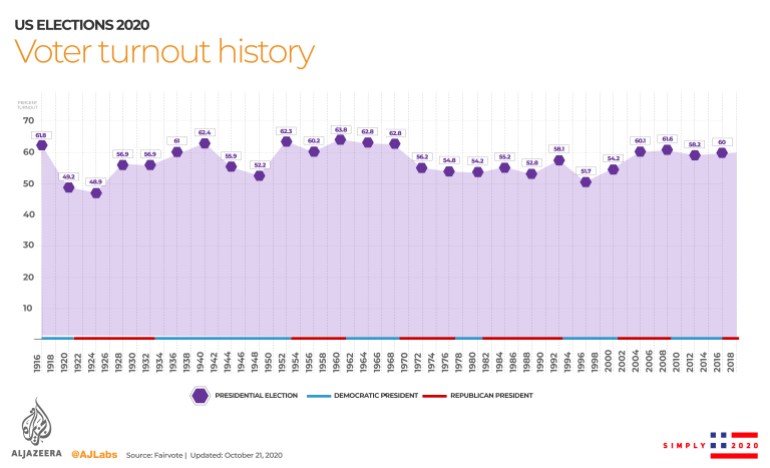Everything you need to know about US elections – in infographics
The key contests, Electoral College and battleground states explained ahead of Tuesday’s vote in the United States.

The presidential race is not the only one on Election Day ballots across the United States.
In addition to voting for their new president, Americans will also choose candidates in various federal, state and local elections.
Keep reading
list of 4 itemsWhy does the US economy matter? | Start Here
How will Indian Americans vote on November 3?
Biden and Trump in battleground blitz: US elections news
Among the federal races are elections for the US House of Representatives and Senate, the two houses that make up the federal legislature known as the US Congress.
The US House of Representatives
Voters across 50 states will be electing legislators for the House of Representatives. There are 435 seats in total and each seat is up for election every two years.
This year’s legislative elections are even more important than usual because they are the last before a new round of redistricting based on the results of the 2020 Census. Each state’s allocated number of House members is determined by its population, so if a state loses or gains residents in the new Census, they stand to lose or gain seats in the House.
The US Senate
There also 35 Senate seats up for grabs this year, roughly one-third of the 100-seat body. Around a dozen of those 35 are competitive seats and each is extremely important as Republican control of the chamber is at stake. Currently, the Republicans have a 53-47 advantage. If the Democrats can gain four seats, they will guarantee a takeover of the Senate majority.
Governors’ races
The most important non-federal elections this year will choose governors who run the executive branches of each individual state government.
Voters in 11 states and two territories, Puerto Rico and American Samoa, will elect governors this Election Day.
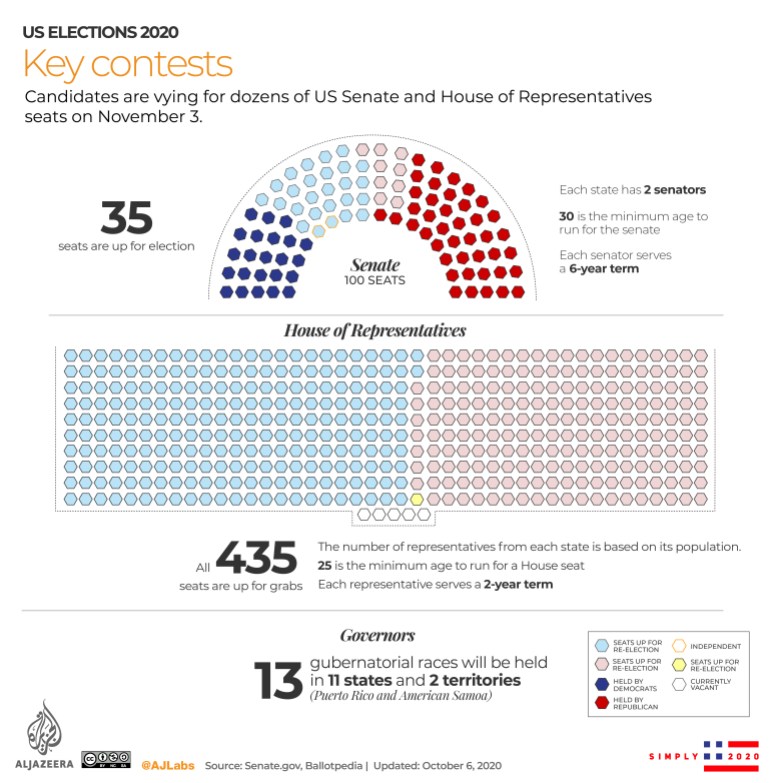
What is the Electoral College?
In the US, the president and vice president are not directly elected by voters, as laid out in the US Constitution. When voters make their presidential choice on their ballot, they are really voting for a slate of “electors”, who, after the votes are counted and certified, are pledged to vote for a presidential and vice-presidential candidate.
These electors actually cast the deciding votes for the presidential and vice-presidential candidates during a meeting of the Electoral College.
In 48 states, these electors “pledge” to vote for the presidential and vice-presidential candidates that receive the most votes in their respective state.
Two states – Maine and Nebraska – have slightly different systems: Two electors “pledge” to vote for the candidate that wins the state’s overall popular vote, while the remaining electors are allocated to the winner in each congressional district.
While the presidential election is on November 3, the Electoral College will vote on December 14.
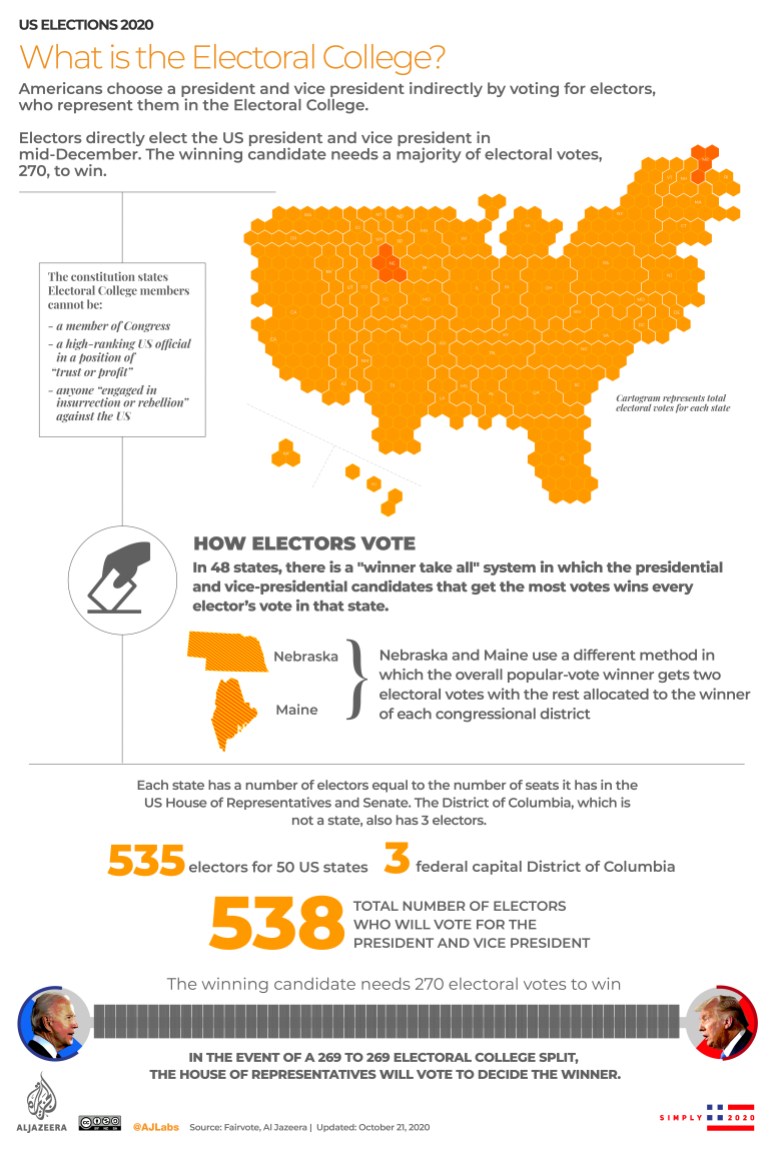
The number of electors in each state is equal to the number of its House representatives plus two, the number of US Senators in each state. There are a total of 538 electors: 535 from the 50 states and three from the District of Columbia, which is the federal capital and not a state, per the constitution.
Prior to 1961, when a constitutional amendment allotted Washington, DC, three electoral votes, residents of the district did not have a say in presidential elections.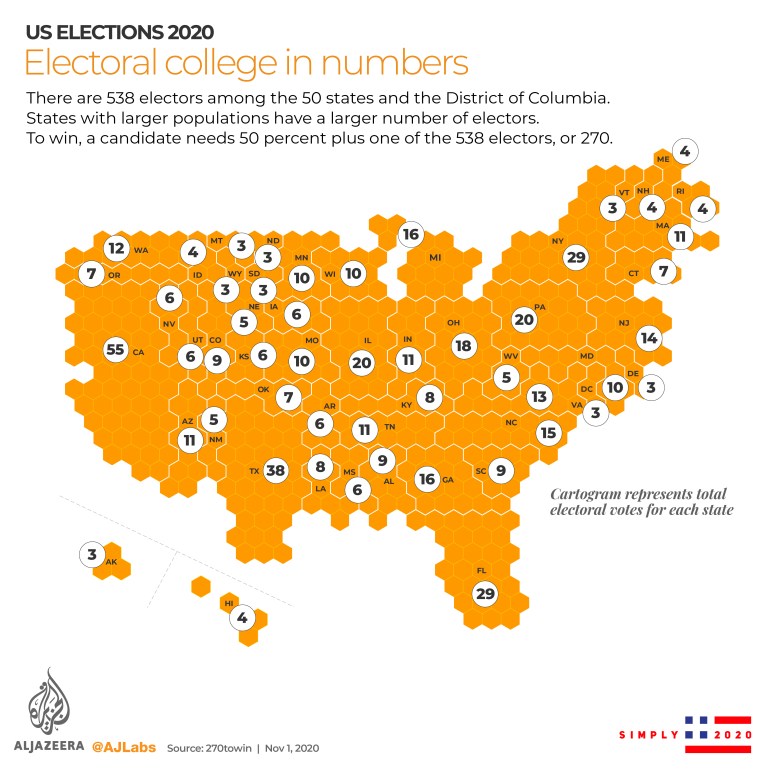
What are battleground states?
Because certain states regularly vote Democratic or Republican, those states are given much less attention by presidential candidates than the states where polling is very close.
Those so-called “battleground” states, also known as “swing states” or “toss-up” states, of which there are about a dozen every four years, hold disproportionate sway in US presidential elections.
Election analysts consider states battlegrounds where the margin of victory is expected to be fewer than five percentage points.
By November 2, more than 94 million Americans had already cast their ballots either by in-person early voting or by mail – a process expanded in many areas amid the COVID-19 pandemic.
That number represents more than 68 percent of the total number of votes cast in the 2016 presidential election. Nearly 60 percent of voting-eligible Americans have participated in recent presidential elections, though some are predicting the number will rise this year.
Early voting numbers in both Hawaii and Texas are higher than their total overall voter turnout in 2016.
Here is what the electoral map looks like at the moment:
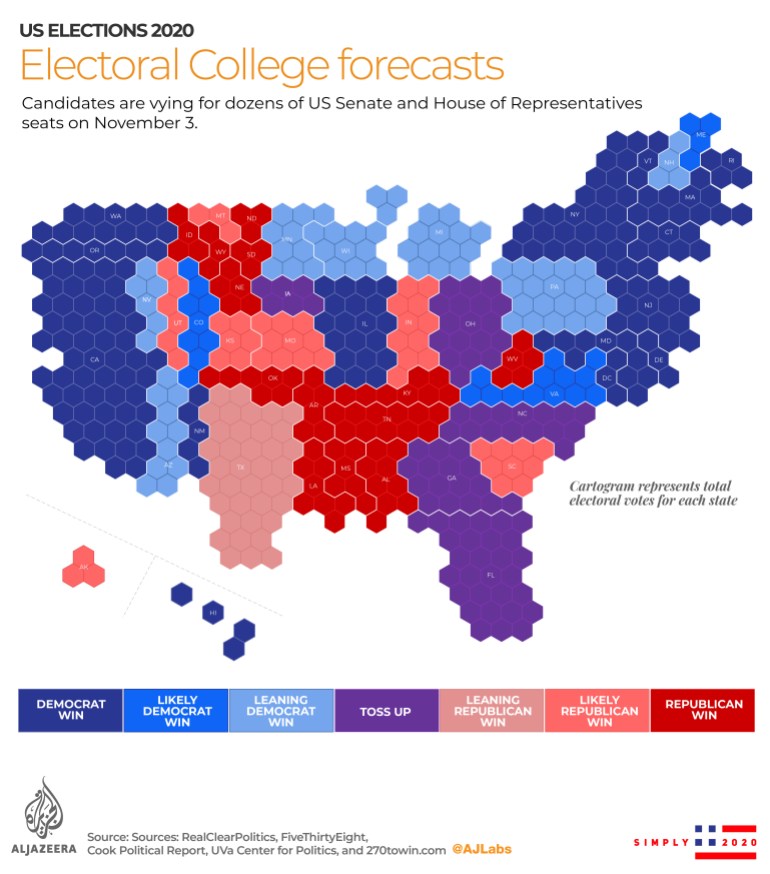
How large is voter turnout in US presidential elections?
Voter turnout for US presidential elections has hovered around 60 percent of the voting-eligible population in recent elections. In 2016, 60.1 percent of eligible voters turned out, which was up from 58.6 percent in 2012, but down from 61.6 percent in 2008.
A shift in recent voting patterns due to states allowing more opportunities for voters to cast early ballots has been accelerated this year because of the pandemic.
